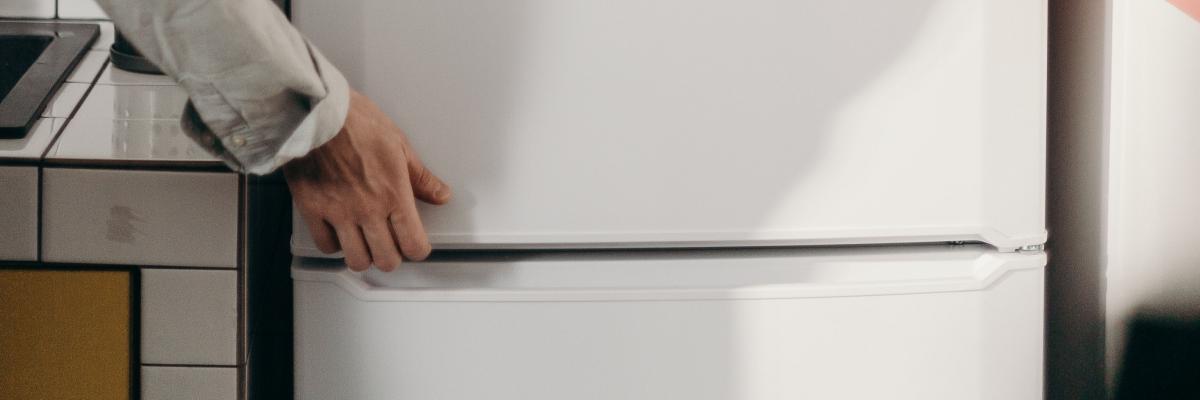Fridges & Freezers
Old fridges and freezers can be one of the major contributors to energy use in a kitchen or laboratory.

Schedule annual clean-outs to keep fridges and freezers operating efficiently, and identify unwanted samples that may be taking up valuable space in your lab to help reduce incidents of research loss due to freezer failure.
-
Five minute fridge and freezer audit
- Check the surrounding space. There should be 5cm around the top, sides and back for air to circulate.
- Check the door seals. Stick a piece of paper in different positions around the door. If the paper pulls out easily when the door is closed, you’ll be losing air through gaps and need to replace the seals.
- Vacuum the condenser coils. Access the condenser coils from the back (pull your refrigerator away from the wall) or from the bottom front (remove the grill). Use a vacuum or bristle brush to clean the coils of dust, dirt and pet hair every few months, especially if you have a pet that sheds.
- Check the temperature. For optimum efficiency, keep your fridge set to between 3 and 5 degrees, and your freezer* between -15 and -18°C. *Ultra-cold freezers will be set to well below this point.
- Check the age. If your fridge is more than 7 years old, there’s a good case for upgrading as energy efficiency standards have improved a lot. Purchase items with Energy Star ratings of 4 or higher.
- Check the built-up of ice. If it’s greater than 0.5cm, defrosting is required as your freezer will be working overtime.
-
Kitchen freezer clean out
- Transfer food to another freezer and compost items beyond their used-by date.
- Put cloths down to absorb water.
- Remove excess ice with a cloth or rubber scraper.
- Turn off the freezer and leave the door open for 24 hours.
- Wipe out the freezer with warm water and baking soda to absorb odours.
- Close doors, restart the freezer and allow it to reach the desired temperature before adding food back again.
-
Lab freezer clean out
**Lab Managers only
- Inform your colleagues of the upcoming clean out in advance so they can plan their participation.
- Ensure a backup freezer has reached the necessary temperature.
- Have each researcher take turns cleaning out their shelf, boxes or racks, transferring items into the backup freezer.
- Correctly dispose of unnecessary samples.
- Remove excess ice with a cloth or rubber scraper.
- Clearly label and date samples before putting them back into the freezer.
- Check that the freezer alarm is working correctly. If not, report immediately to the Facilities Support Desk.
- If you notice any issues with your freezer, report them immediately to the Facilities Support Desk.
